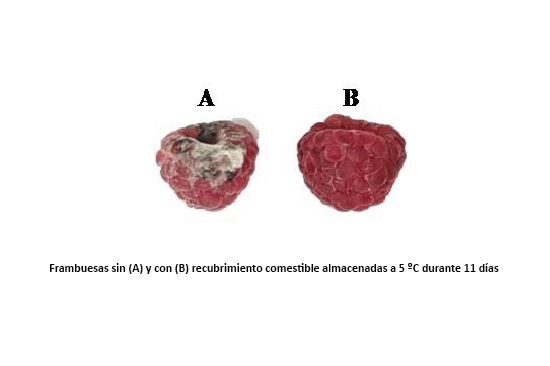
-
Edible coatings are a promising alternative for controlling the quality and safety of fresh products, and for extending their shelf life
-
They incorporate natural extracts and compounds that can be used for both antifungal and virucidal purposes
The market for fresh and minimally processed fruit and vegetables has grown exponentially due to changes in consumer lifestyles. Consumer preferences for fresher, more nutritious products with natural additives have led the food industry to focus its efforts on developing innovative preservation technologies to mitigate post-harvest losses, which typically account for 5-25% of production in developed countries.
Among the main problems affecting these industries are losses caused by fungal pathogens that infect the fruit before, during or after harvest, but develop the disease during marketing. These fungal infections are mainly controlled using fungicides and other synthetic chemicals. However, both the increased demand for safe and nutritious food and the legislative restrictions imposed on synthetic fungicides (which also have a poor public image), have positioned edible coatings as a promising alternative to control the quality and safety of fresh produce, and to extend their shelf life. In fact, they are postulated as a solution to maintain or increase high quality standards in products without increasing their price and according to sustainability criteria.
A recent study conducted at IATA-CSIC, led by researchers Mª José Fabra and Amparo López-Rubio, in collaboration with Ana Rosa Ballester of the same institute and in partnership with the University of Tucumán (Argentina), has developed natural edible fungicide coatings, which contain a propolis extract from the Monte region of Argentina to extend the quality and shelf life of berries. In addition, this strategy will contribute to the reduction of the amount of plastic material used in food packaging thus reducing the impact of the food production chain on environmental pollution.
In addition, in the line of edible coatings, they are leading, together with Dr. Gloria Sánchez from IATA-CSIC, the development of edible coatings with virucidal properties for application to berries and pre-prepared convenience products, which are susceptible to contamination by food viruses such as human norovirus or Hepatitis A virus. Enteric viruses are mainly transmitted through the faecal-oral route and therefore may potentially be present in foods that have been directly contaminated with faecal material, or through contact with contaminated water or surfaces. Red fruits are among the main foods involved in foodborne viral infections. Currently there are few effective, realistic and validated strategies to eliminate or minimize enteric virus contamination in both fresh and frozen products without significantly modifying their organoleptic properties. To alleviate these problems, the IATA-CSIC group has developed edible coatings that include natural anti-viral compounds and that have demonstrated their effectiveness in various fruits.
This work opens up a new avenue for research and sustainable food production, while responding to a legitimate consumer demand.
Figure 1. Raspberries without (A) and with (B) edible coating stored at 5 ºC for 11 days
References:
Moreno, M.A.; Vallejo, A.M.; Ballester, A.-R.; Zampini, C.; Isla, M.I.; López-Rubio, A.; Fabra, M.J. Antifungal edible coatings containing Argentinian propolis extract and their application in raspberries. Food Hydrocolloids 2020, 207, 105973.

